Newsletter
The CMG would like to thank
its main partners
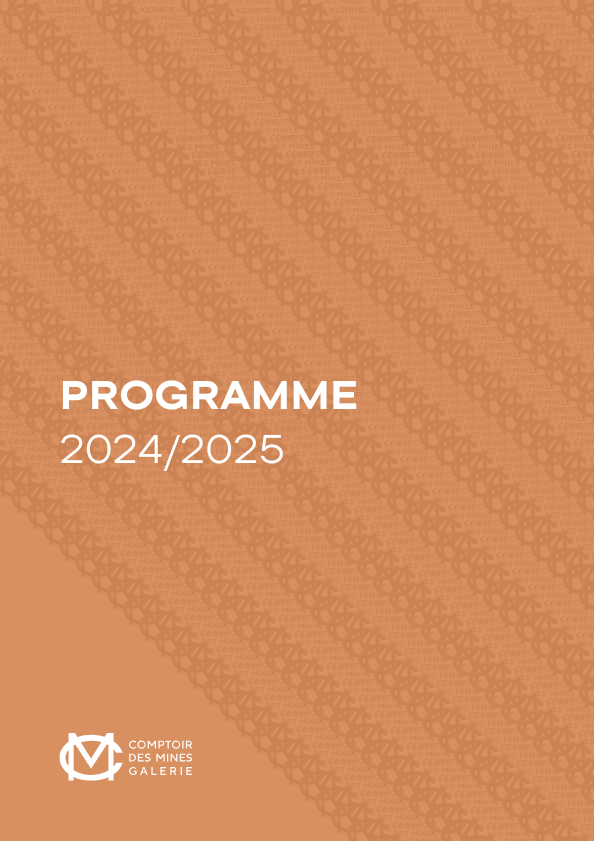
Marrakech, Paris, Mexico or Dubai, this artistic year will be, once again, filled with new artistic encounters, combining exhibitions and international art fairs, but in a slightly different format, enhancing and multiplying the artistic experience...
Starting in September with Menart Fair, an edition devoted to women artists from the Arab world, in which the gallery will present Fatiha Zemmouri, Khadija Jayi and Katya Traboulsi. In early November, Dubai will host the 1st edition of Editions Art & Design, founded by Art Dubai Group, in which the gallery will present a collective project uniting Mohamed Melehi, Mohammed Kacimi and Farid Belkahia while Majaz will return later in the month with 5 moroccan talents, Amina Azreg, Safae El Kadi, Karim Barka, Aymane Errachidi and Ilias Elhaddaoui for their first solo show. Taking over in December, a great retrospective of the last research of Mohammed Kacimi - certainly not to be missed. In January, 1-54 Marrakech will kick off again with its inaugural nocturne, an opportunity to go to 62 Yougoslavie Street, attend the vernissage of Simohammed Fettaka and Mohamed Arejdal solos. Across the Atlantic Sea, Comptoir des Mines will take part for the first time in Zonamaco, presenting “Back to Mexico” - a project creating a dialogue in between Mohamed Melehi and its contemporary heirs. The gallery will then meet the public in Art Dubai for its fifth participation, presenting a collective project with Mohammed Kacimi, Mustapha Akrim, Khadija Jayi and Fatiha Zemmouri. Season will end with lebanese artist Katya Traboulsi and her latest major personal project, alongside Khadija Jayi and her second biggest solo exhibition.
This programme may change for reasons beyond our control, nonetheless, the public will always be informed about the eventual changes through our website, newsletter and social networks.
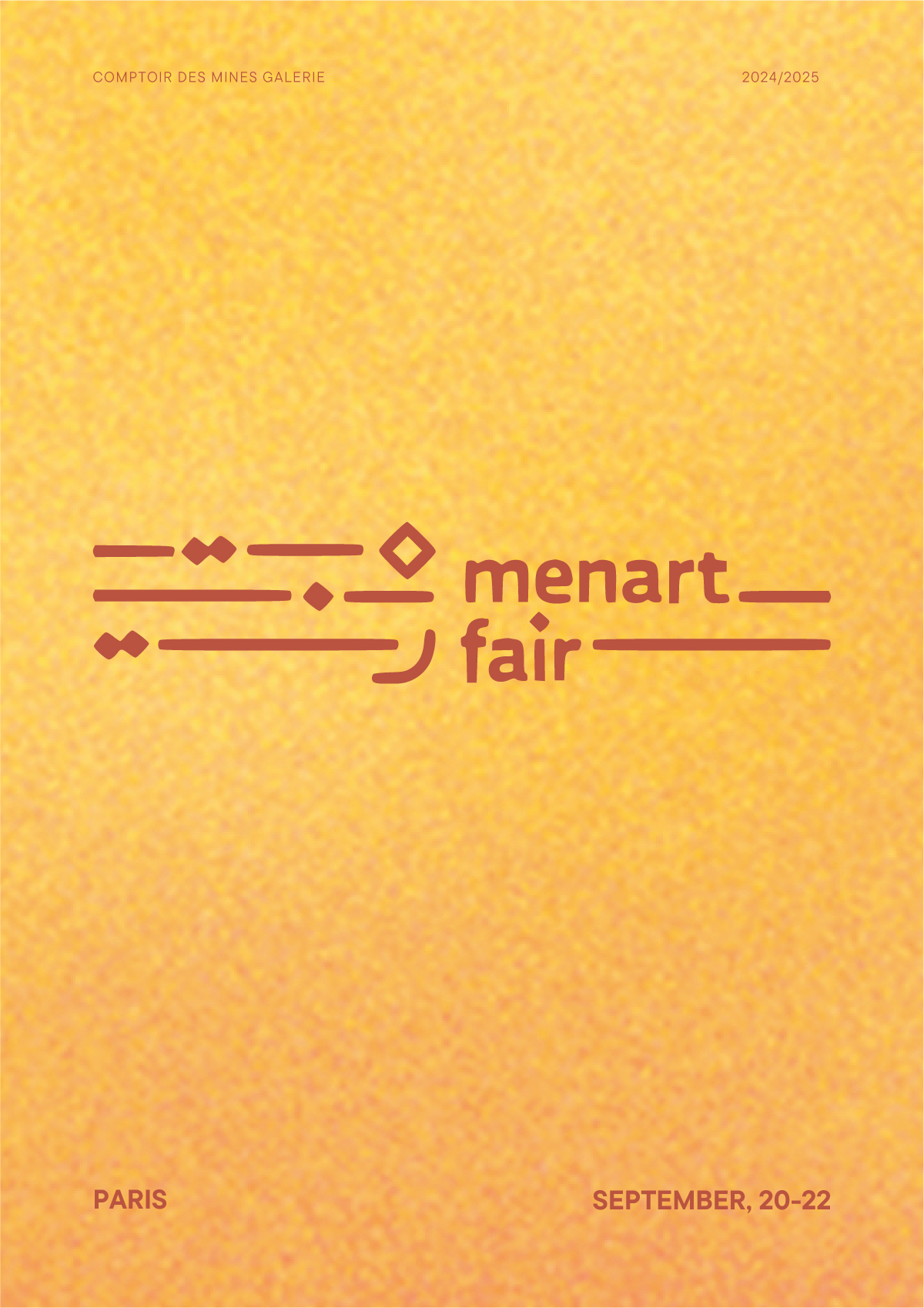
Comptoir des Mines Galerie is associated with the Menart Fair 2024 ‘Tribute to Women Artists’ edition because we are sensitive since the creation of our gallery in 2016 to give a fair representation of artistic sensibilities and points of view, never omitting the role of women artists in our modern and contemporary history.
In Morocco in particular, and in a number of countries in the Arab world, women artists have often been pioneers and have taken part in the same epics as their male counterparts when it comes to writing the stories of social and artistic modernity. Women artists have been present in virtually every period and artistic movement since the beginning of the twentieth century, and we should not be surprised that they exist in an orientalist reading of things, but rather wonder about the fair recognition of their artistic values. From the Maghreb to the Mashreq, we are sensitive to a certain poetry, which whispers both pain and hope, joy and uncertainty, the land and its exile, without ever abandoning the ornament and the sublime that anchor the art of our lands in narratives other than those that the West sometimes opposes to us.
SEPTEMBER 20-22, 2024
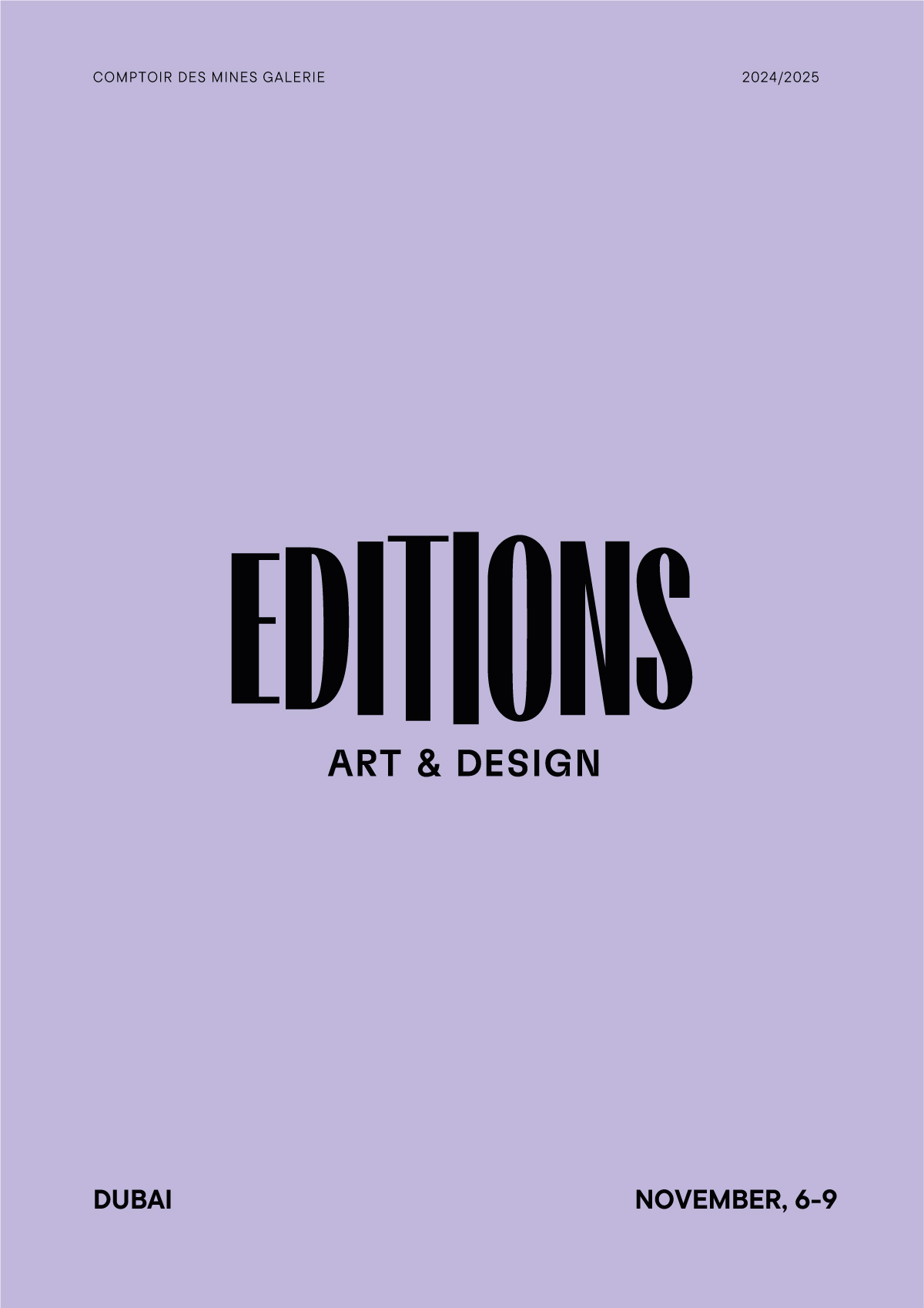
Comptoir des Mines Galerie will take part in the inaugural edition presenting pioneering moroccan artists Mohamed Melehi, Mohammed Kacimi and Farid Belkahia. The collective exhibition will showcase a rare ensemble of prints, silkscreens, lithographies and monotypes. Art enthusiasts and collectors will have an opportunity to dive into a universe of bold and colourful compositions with strong and universal messages, witnessing both vision and modernity of the artists. A selection that lies in the influential legacy of the Moroccan ‘new wave’ known as The Casablanca Art School, rooted in a dense and rich heritage, as a voice for questioning on urban, social and cultural matters.
6-9 NOVEMBER 2024
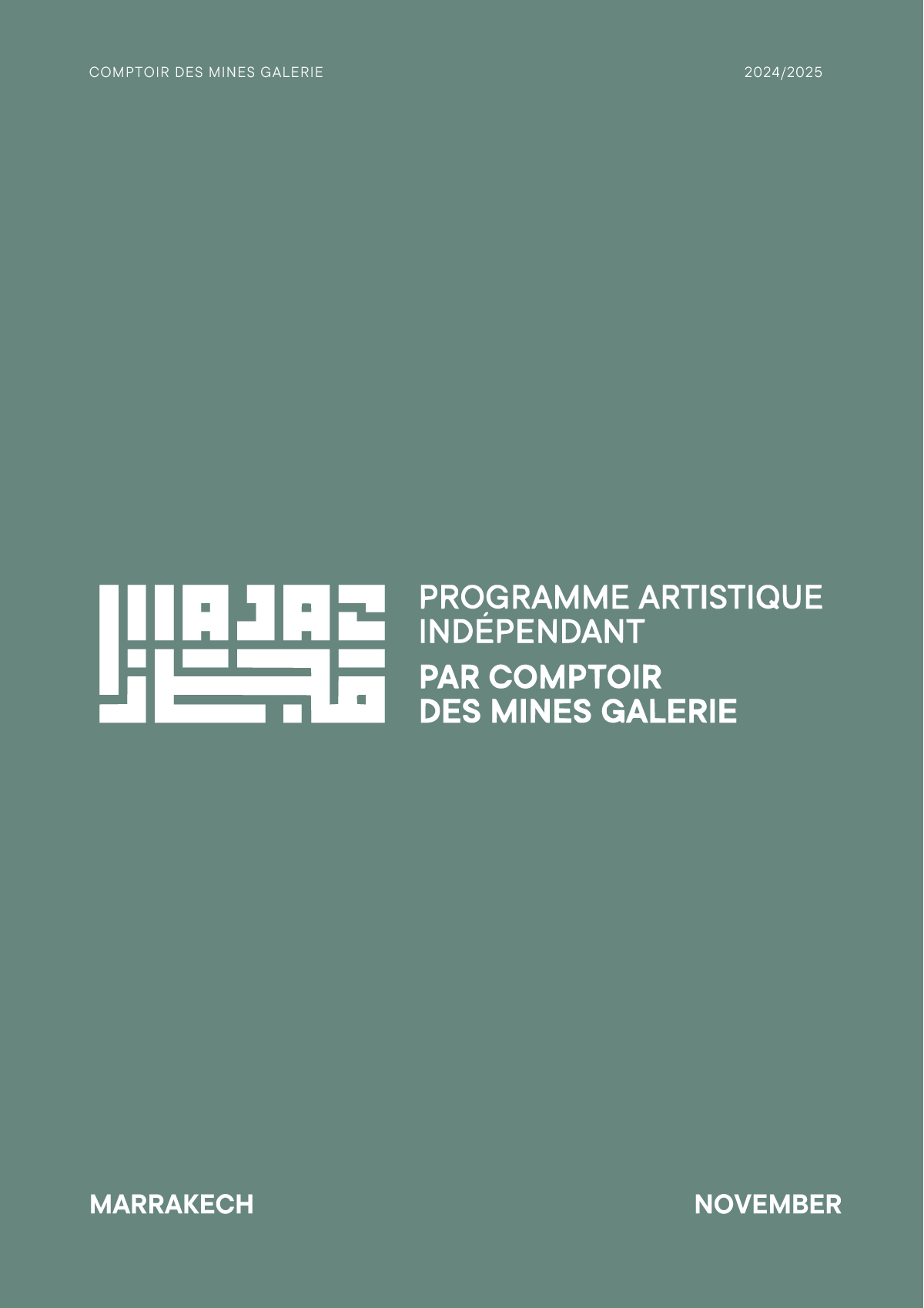
Majaz returns for its fourth edition to present 5 moroccan artists. Amina Azreg, Safae El Kadi, Karim Barka, Ayman Errachidi and Ilias Elhaddaoui have been selected to present their first solo exhibitions at Comptoir des Mines Galerie. Each one will invite the public to discover their own artistic universe. Amina Azreg proposes surrealism as a metaphorical quest to immerse us in a world depicting colourful yet intriguing reality dissolved at the crossroads of dream and reflections. Safae El Kadi offers to reveal hidden depths of objects, questioning relationship and meaning, engaging in a playful exploration of the surface, immersing in the materials’ elements and contradictory properties. Karim Barka presents a work revolving around the essence of human existence, questioning the boundaries between the Self and the Other, tackling both poetic and political issues. Ayman Errachidi shares his fascination of the austere and the mineral, a work deeply rooted in the reminiscence of the landscapes of his childhood, fed by a pride of desert culture. Ilias Elhaddaoui focuses on visual demonstrations of the anti-speciesist, reflecting on the place of human as living beings while questioning about animal ethics far removed from individualistic self-centredness.
NOVEMBER 2024
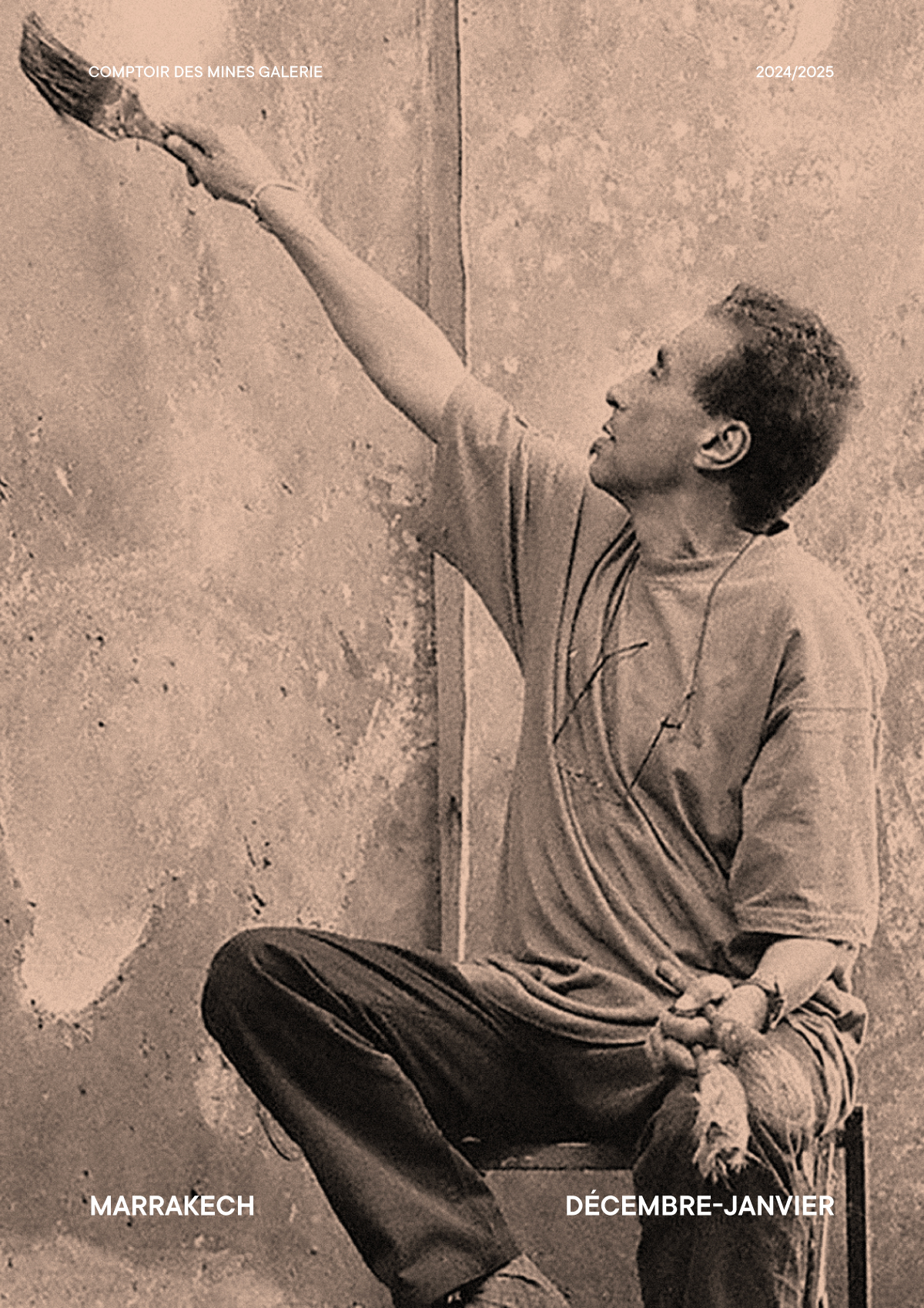
Mohammed Kacimi's solo exhibition will focus on the culmination of his life's work. Rare and exceptional artworks will be presented as a reflection of the solo exhibition 'Kacimi-1993-2003. Une transition africaine' by the Musée des Civilisations de l'Europe et de la Méditerranéen (MUCEM), curated by Nadine Descendre, in 2018.
This period, known as his 'African period', from 1993 to 2003, marked a break with both Western art and the currents that had influenced his art. For the artist, this was a very different chapter from his previous periods, much more personal, characterised by a liberated, disruptive and transdisciplinary expression. By highlighting this important moment, the exhibition invites visitors to re-examine how Mohammed Kacimi's work has contributed to the development of a new Mediterranean imaginary.
In this exhibition on the artist's most productive period, Mohammed Kacimi, initially influenced by the Ecole de Paris, turned to Africa in search of truth and authenticity, in line with his growing awareness of his 'African-ness'. Mohammed Kacimi became convinced that his art should be based on an intercultural dialogue between the Maghreb and sub-Saharan Africa, refusing to distinguish between a 'white Africa' and a 'black Africa' separated by the Sahara.
DECEMBER, 28-JANUARY, 20
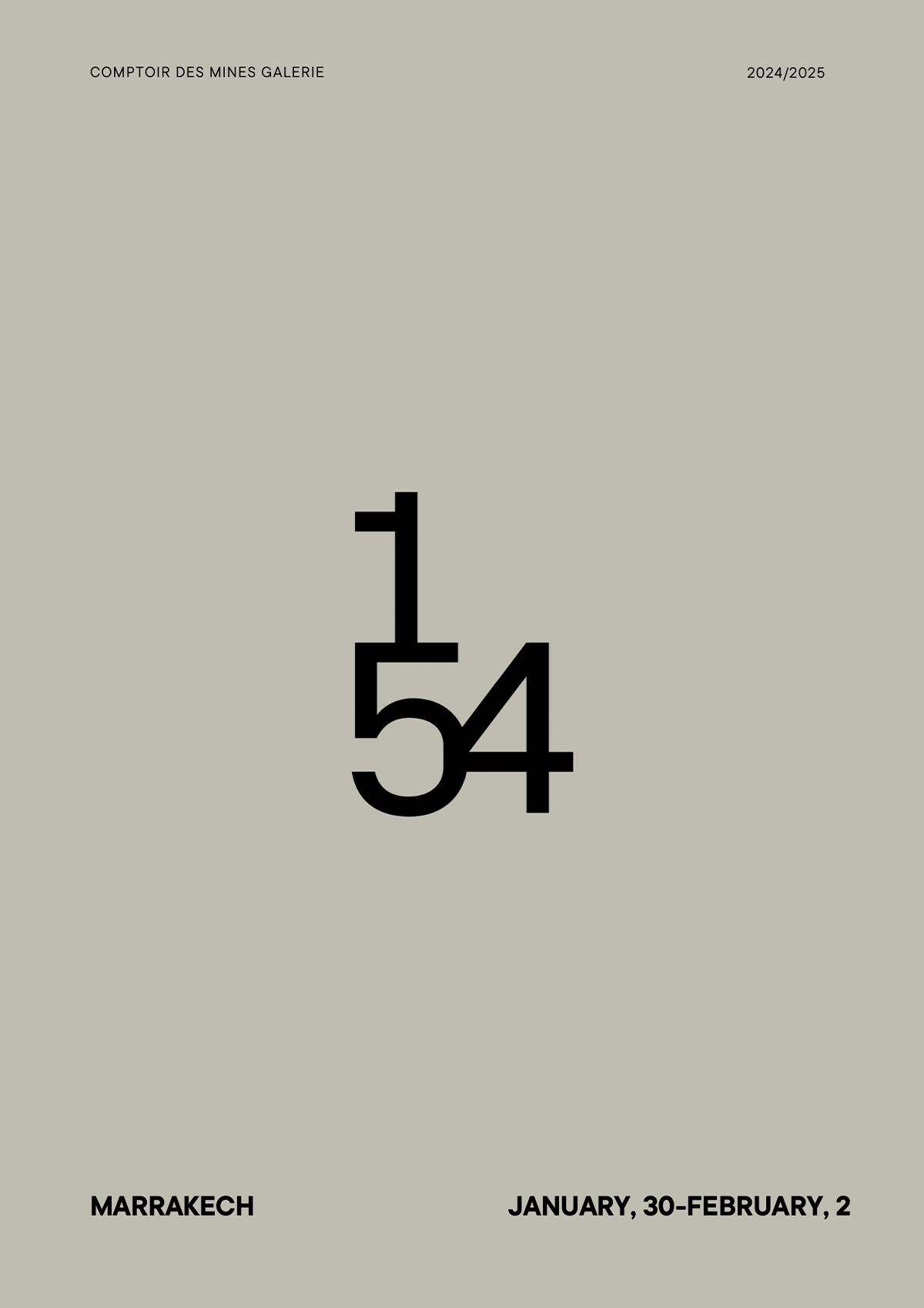
Comptoir des Mines Galerie is pleased to present its artistic programme for 1-54 Marrakech 2025, one of the most important artistic and cultural events the city offers to thousands of international art enthusiasts and connoisseurs.
Kicking off with its inaugural nocturne, 1-54's Gallery Night will be an opportunity to visit 62 Yougoslavie Street and attend the opening of the two solo exhibitions of Comptoir des Mines Galerie artists Simohammed Fettaka and Mohamed Arejdal, for their second and third individual projects at the gallery respectively. The public will also have the opportunity to discover a selection of rare and exceptional works by modern Moroccan artist Mohammed Kacimi as an extension of his solo exhibition launched in december.
On this occasion, the public, visiting for the first time since last summer, will discover the new exhibition spaces, unveiled after months of renovation, which offer an enhanced artistic experience. This renovation has been designed by and for a greater vision of art, enriching the visit and highlighting the talents on display through light and space. This overall transformation presents the new face of the Comptoir des Mines Galerie, its future projects and its new ambitions.
MARRAKECH JANUARY, 30-FEBRUARY, 2
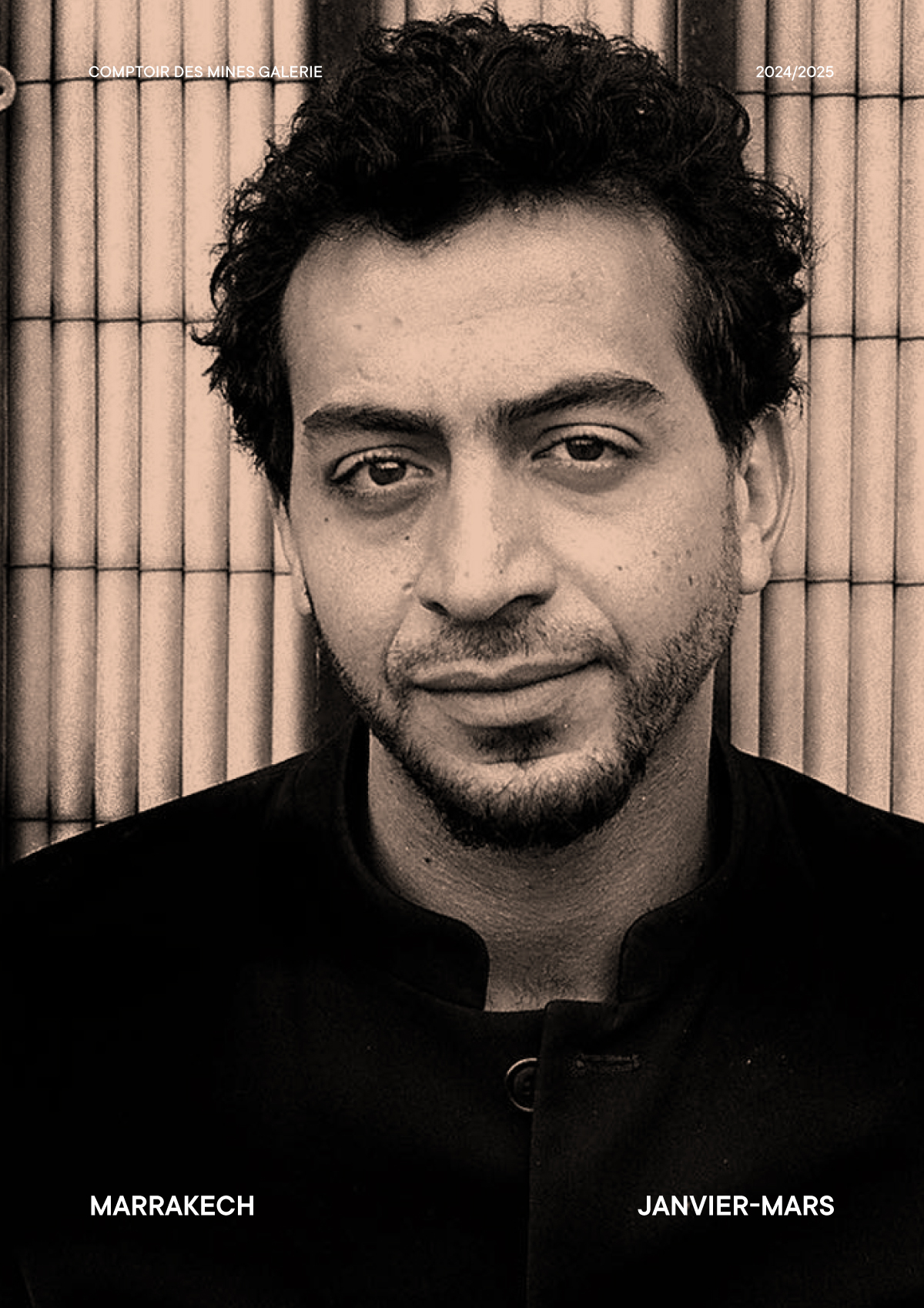
For his second solo exhibition at Comptoir des Mines Galerie, the artist's project is based on wisdom and anguish, verve and radicalism, fluidity and trial and error. Through his creations, the artist seeks an outlet for his pessimism, always with a smile on his face, because life seems to him to be one big comedy. Play and childhood hold a special place in his art, as much as inspiration as discipline.
By "playing" with the world, Fettaka aims to raise questions about the "society of the spectacle" in which we live. Fettaka's gentle gaze castigates contemporary society, caught between the sacralisation of power figures and the sterility of security- oriented migration policies.
For several years now, Simohammed Fettaka has been ingeniously practicing an art form that aims to 'change knowledge as it is established, by assuming the subjectivity of perception'. Convinced that art objects, like established images, are neither closed nor finished, he plays with them, turns them upside down, diverts them, rereads them, in a constant desire to exhaust their possible meanings. He doesn't stop at the image itself, but also at its off-screen, breaking the frame and offering counterpoint and sometimes reversal.
MARRAKECH JANUARY 30-MARCH 29, 2025
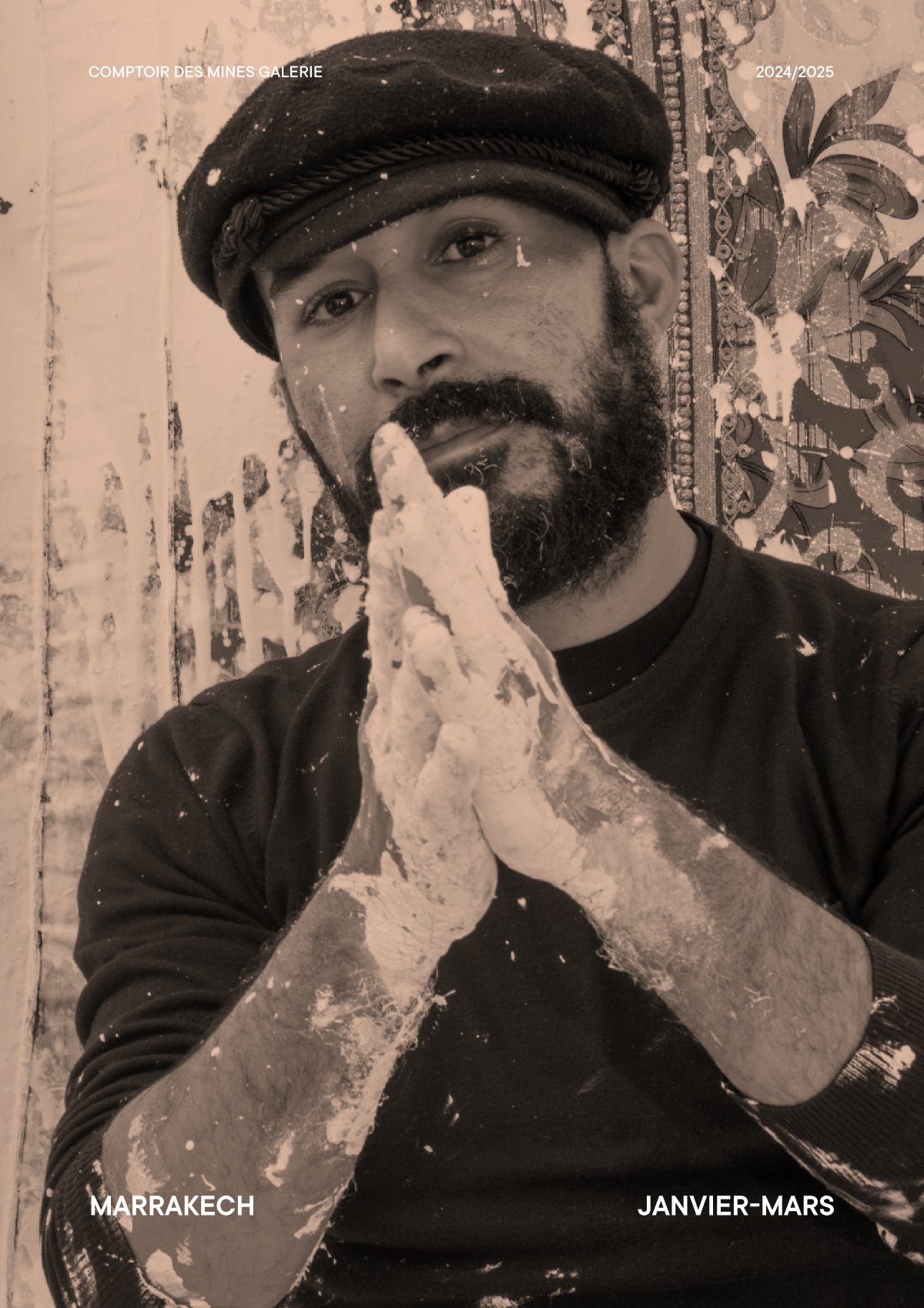
The famous artist who decided to create the permanent artwork “Who holds Africa holds the Sky” out of the gallery’s roof is back.
Mohamed Arejdal has laid the foundations for a multidisciplinary practice in which he explores the links between social groups that he questions during his encounters and travels. His artistic performances play a key role in his work, and he never hesitates to question the public about his status as an artist, or the meaning of powerful symbols. The interest of his art lies in what links human beings together, their origins, memories, territories, tropisms, movements, existential conditions, beliefs and religious practices. He tracks them down and explores them, convinced that what links each being to others and to the world in a more general and universal way is to be found in what is most circumscribed and most specific. His works find their material and their nourishing source first and foremost in the artist's own story and personal memory, linked to the territories in which his life unfolded and to which he remains viscerally attached. The individual is not cut off from the collective, and the collective from the individual, and this weaving is a permanent feature of his work as a whole.
MARRAKECH JANUARY 30-MARCH 29, 2025
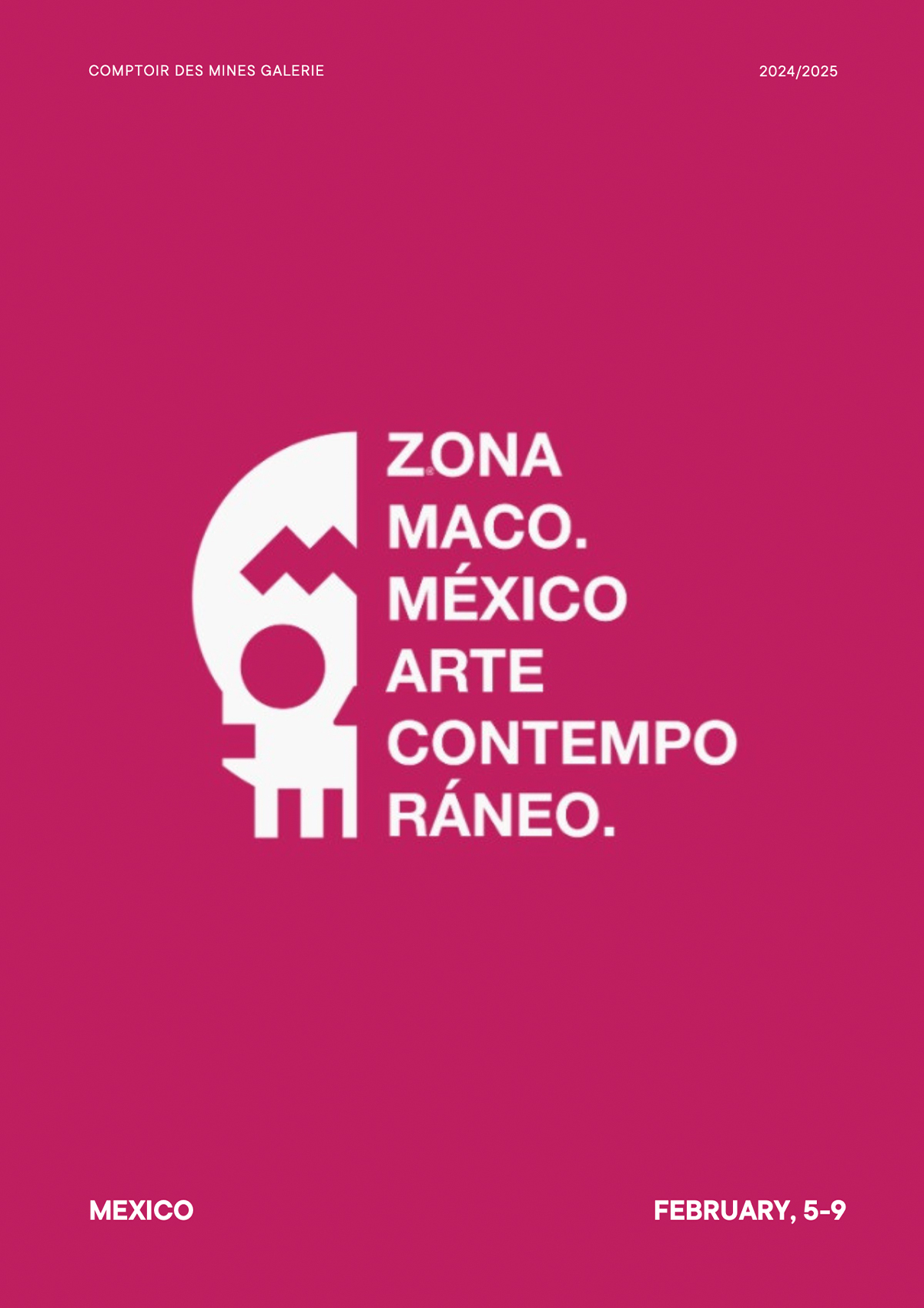
Heavily influenced by the ideas of the late Mohamed Melehi and the artists of the Casablanca movement, Comptoir des Mines Galerie presents “Back to Mexico”, a range of research by artists from different artistic backgrounds, with Mohamed Melehi as its reference, followed by Mohamed Arejdal, Mustapha Akrim, Hassan Darsi, Fatiha Zemmouri and Khadija Jayi.
A dialogue where converge singular opinions on territories, conditions and perspectives “from the south”. From the impact of climate change, to the death of certain cultural particularities, to issues of territory and women condition, they express the tensions of so-called southern societies. Morocco and Mexico, both on the doorstep of the West, are often in the ungrateful position of erecting walls or controlling migratory flows to preserve the stability of rich countries. Two countries facing the same problems of drought, pushing rural populations towards large urban centres, abandoning traditions, lifestyles and cultural characteristics that go back thousands of years. Two countries, constantly described as emerging, often associated with the tourist industry and folklore to entertain and welcome the same people who fear mass immigration and replacement.
MEXICO FEBRUARY 5-9, 2025
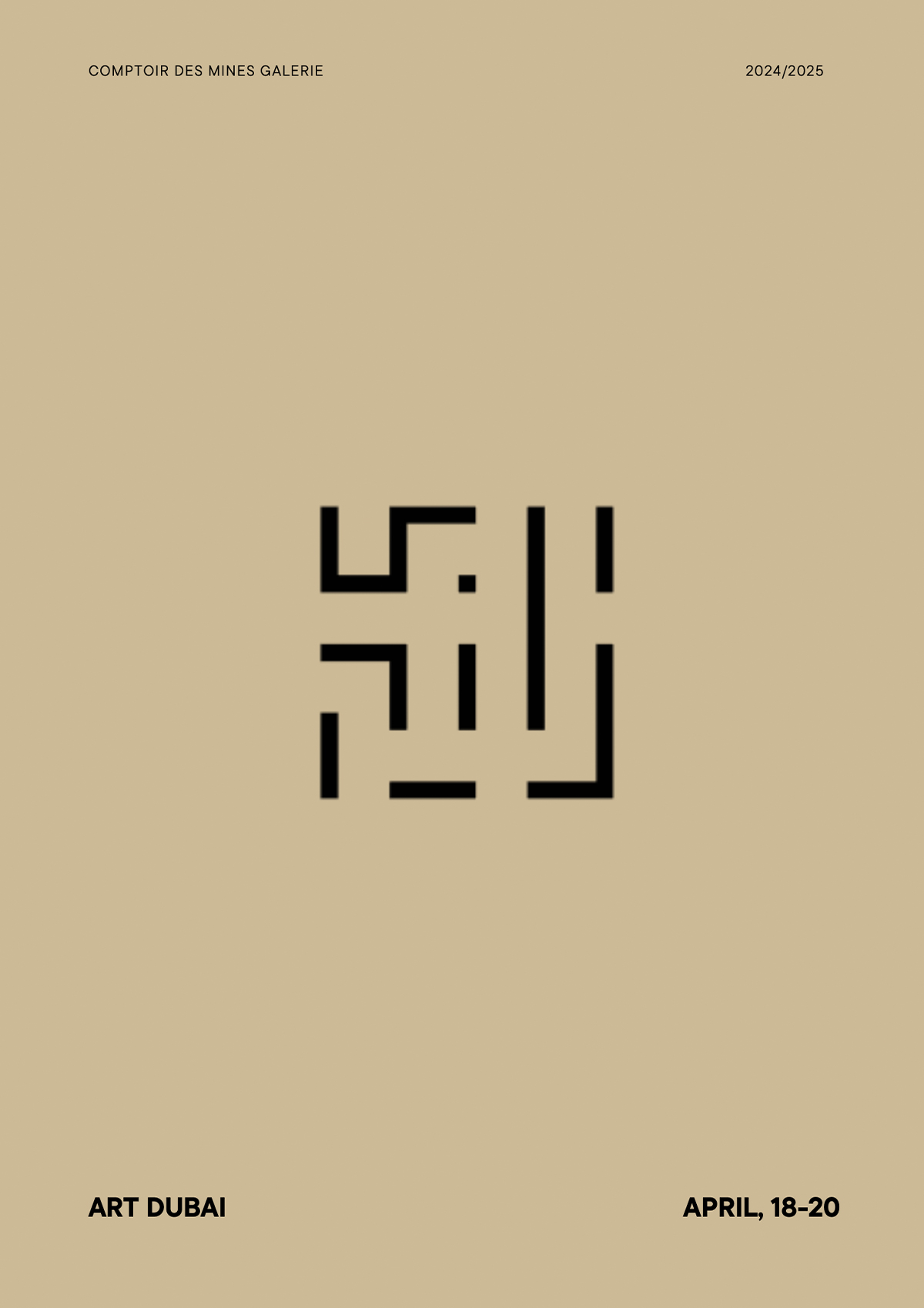
Mustapha Akrim, Khadija Jayi, Fatiha Zemmouri
For its fifth participation in Art Dubai, Comptoir des Mines Galerie will present a dialogue between modern moroccan artist Mohammed Kacimi and contemporary moroccan artists Mustapha Akrim, Khadija Jayi and Fatiha Zemmouri. With their individual artistic language, they will engage on issues that seem never to be resolved, building on the historical legacy of Mohammed Kacimi, who enriched the role of the activist artist like no other before him - witness of tragedies in Iraq, Palestine and West Africa.
From the dawn of Morocco's independence between 1953 and 1955, contemporary Moroccan artists have been political actors, using their visual language to address their ideas and, in a way, resist an order that did not convince them. This tradition was carried on beyond independence, notably for the Palestinian cause during the 1960s and 1970s, when artists from the Casablanca movement - also known as Casablanca Art School, expressed their support for the Palestinian people and evinced their anger for the domination of the North (or Western societies) over the countries of the South.
These four artists, gathered together, each in their own way, speak about destruction and resilience, constantly traveling between the intimate and universal scale, where humans confront their fears and anger to create and transmit.
DUBAI APRIL 18-20, 2025
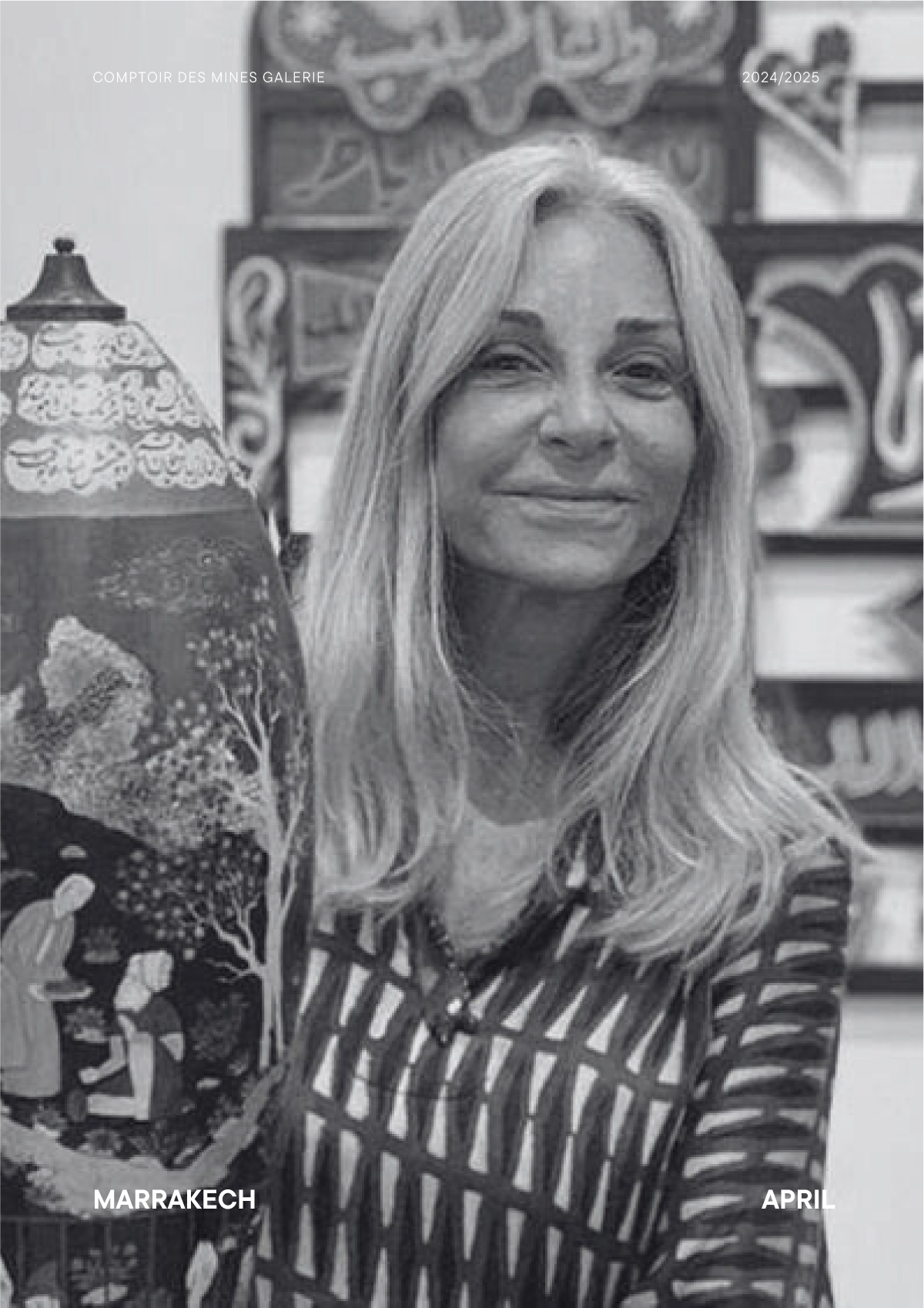
Characterized by the emotional intensity with which she confronts the effects of the Lebanese civil war, both her painting and sculptural works are a bold use of color, which disrupts the viewer’s expectations of the dark subject matter they are confronted with. Her solo exhibition Perpetual Identities (2018) held at the Saleh Barakat Gallery saw presented 46 hand-crafted replicas of Lebanese war bomb shells adorned with colorful patterns, beads and sculpted forms, thus transforming these destructive military objects into beautiful, ornate vessels.
In 2013, Katya Traboulsi published Generation War, a body of work that traces the story of photojournalists who witnessed the civil war during the 80s – an homage to their efforts and a political project that seeks to record the country’s complex histories. Katya Traboulsi lived and worked in Dubai from 1989 till 2016 before returning to her native Beirut. Her work has been exhibited internationally since 1986 in Paris, London, Dubai, Kuwait, North America, the Algerian museum of Modern Art, the International Armory show in NYC, Venice, Washington MEI and U.N in New York in December 2019.
MARRAKECH AVRIL (DATES TO BE UNVEILED SOON)
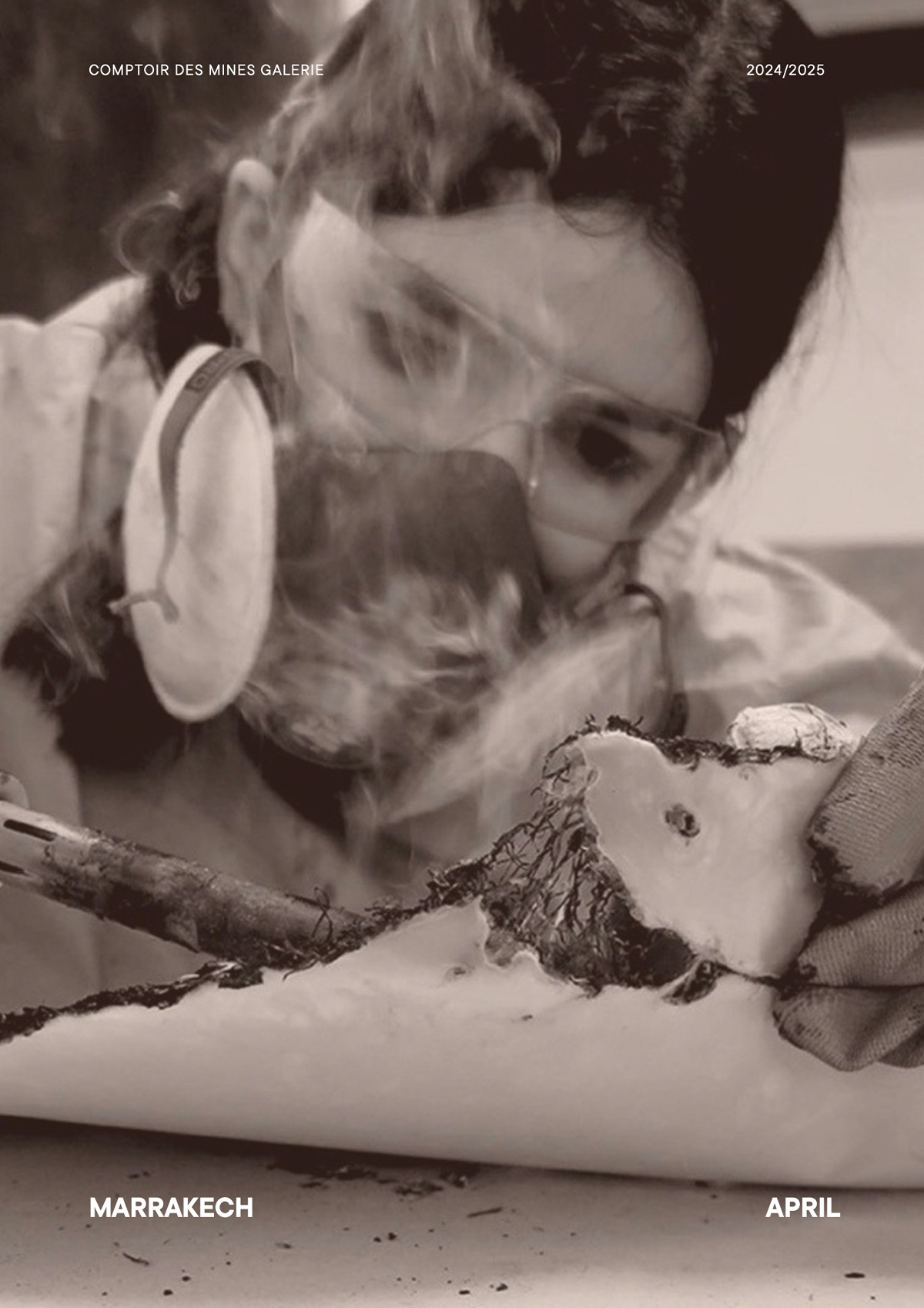
After a memorable first solo exhibition at Comptoir des Mines Galerie in 2022 and numerous appearances in international fairs, Khadija Jayi reveals her latest research in her second major solo.
In a heavy conservative social environment stuck with values of the past, Khadija Jayi developed a singular resistance for herself, setting out to pursue an ideal to give meaning to her life, faraway from a destiny that would be dictated and forced. By rebelling against the oppression that harassed her, Khadija Jayi took charge at her own risk, recklessly defying the prejudices of a society frozen in the strait jacket of a spirituality assimilated to the history of her native town. Having knowingly put herself in a situation of no return, she was determined to face without fail all the setbacks that could destroy her and hinder her path. Through her research, Khadija Jayi has appropriated the language of fire: its light, its heat, but also fire as a form of suffering, to invite us to reflect on the conflicts between tradition and modernity. Her vibrant works are the result of an emblematic approach to forms and traces of burning. To approach the artistic universe that this young artist explores with passion and endurance with full knowledge of the facts, it is essential to refer to the events of her life. An experience which she deeply bears the stigma of and which her art, in an impulse of extreme sublimation, transforms into enigmatic signs full of questions and allusions.
The CMG would like to thank
its main partners


Stay informed about gallery programs, news and fairs.
62, Angle rue de la Liberté and rue de Yougoslavie, Gueliz, 40000 Marrakesh, Morocco.
The CMG would like to thank
its main partners:

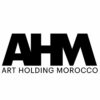
© 2025 Comptoir des Mines Galerie. Tous droits réservés.
Art Holding Morocco
Vous recherchez une œuvre d’un des artistes de la galerie en particulier ?
Notre équipe est à votre disposition pour vous accompagner dans le choix de votre future acquisition et vous propose des solutions de transport nationaux et internationaux.
Veuillez remplir le formulaire ci-dessous pour vous renseigner sur cette œuvre.
Afin de répondre d’autres questions et demandes, merci de nous contacter.